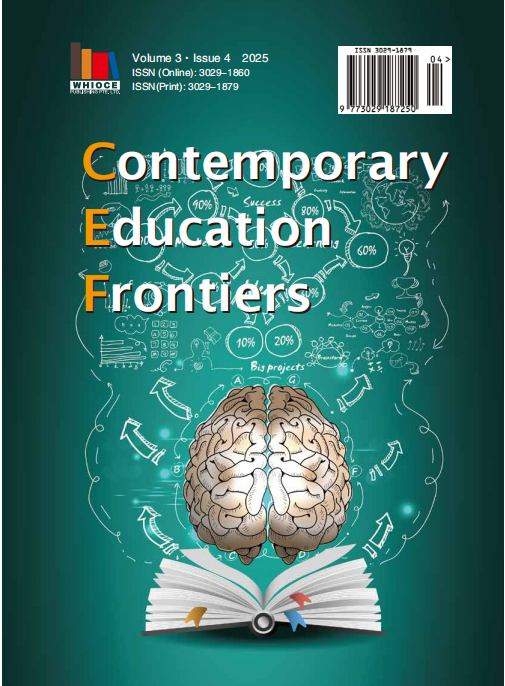Exploration and Practice of Green and Low-Carbon Engineering Education in the Field of Concrete Science in Ethnic Colleges
DOI:
https://doi.org/10.18063/cef.v3i4.960Keywords:
Low-carbon engineering education, Knowledge system, Teaching mode, Multi-dimensional evaluation systemAbstract
The teaching reform of the "Concrete Science" course was studied within the context of green and low-carbon engineering education at ethnic colleges. The existing issues were systematically analyzed to propose targeted improvement pathways within the course. There were four core issues in current curriculum teaching: lagging innovation in teaching content, insufficient innovation in teaching methods, shortcomings in teacher literacy, and an urgent need to improve the evaluation system. In response to the issues above, a comprehensive three-dimensional reform approach was proposed, and a three-dimensional knowledge system that integrates "traditional materials, green technology, and industry standards" was established. This system incorporates cutting-edge content, such as mix design for low-carbon concrete and carbon footprint calculations. Leveraging the BIM platform, we conduct comprehensive lifecycle simulations of green concrete engineering and advocate for a teaching methodology that integrates "virtual simulation, engineering case studies, and industry-academia-research collaboration." A cultivation mechanism integrating "enterprise practice, green certification, and teaching and research training" was developed to encourage teachers' involvement in research and development projects of low-carbon building materials, as well as the formulation of industry standards. We establish an "enterprise practice + green certification + teaching and research training" training mechanism. Teachers were encouraged to participate in research and development projects related to low-carbon building materials and the formulation of industry standards. A diversified evaluation system of "knowledge mastery+practical application+innovative thinking" was built, incorporating green design schemes, low-carbon experimental reports, and other assessment indicators. By deeply exploring the compatibility between the courses and the green and low-carbon education goals, we aimed to promote the development of green and low-carbon engineering education in ethnic colleges, improve the teaching quality of the concrete science course, and cultivate professional talents who were in line with the green transformation requirements of the construction industry.
References
Notice of the Ministry of Education on Issuing the "Implementation Plan for the Construction of a National Education System for Green and Low-Carbon Development" [J]. Bulletin of the Ministry of Education of the People's Republic of China. 2022,(12):6-9.
Zhang Juan, Wang Fenglian. Empowering Manufacturing Enterprises with Digital Intelligence for Green Innovation under the "Dual Carbon" Goal[J/OL]. Journal of Shijiazhuang University of Railway Technology (Social Sciences Edition),2025,(02):9-16.
Su Ai. The Mechanism of the Role of Higher Vocational Education Policies and the Path for Quality Improvement - From the Perspective of Policy Implementation Process [J]. Higher Vocational Education Exploration, 2025, 24(03): 18-26.
Han Guiquan, Li Shanzhong, Zhang Dong'en, et al. Thoughts and Experiences on Offering the Environmental Materials Course [J]. Science & Technology Information (Academic Research), 2008, (32): 445 + 447.
Zhang Yu, Huang Huaye, Liang Xiaolei. "The Connotation and Path of Logistics Engineering Major Construction under the 'Dual Carbon' Strategy" [J]. Higher Education Journal, 2024, 10(06): 36-39.DOI:10.19980/j.CN23-1593/G4.2024.06.008.
Tian Wenhai. Research on the Teaching Reform of Basic Chemistry Courses in the Chemical Engineering Direction of Higher Vocational Education [J]. Chemical Fiber & Textile Technology, 2024, 53(07): 207-209.
Jiang Jing. The Demand and Cultivation of Green and Low-Carbon Civil Engineering Talents [J]. Industrial Innovation Research, 2024, (13): 175-177.

